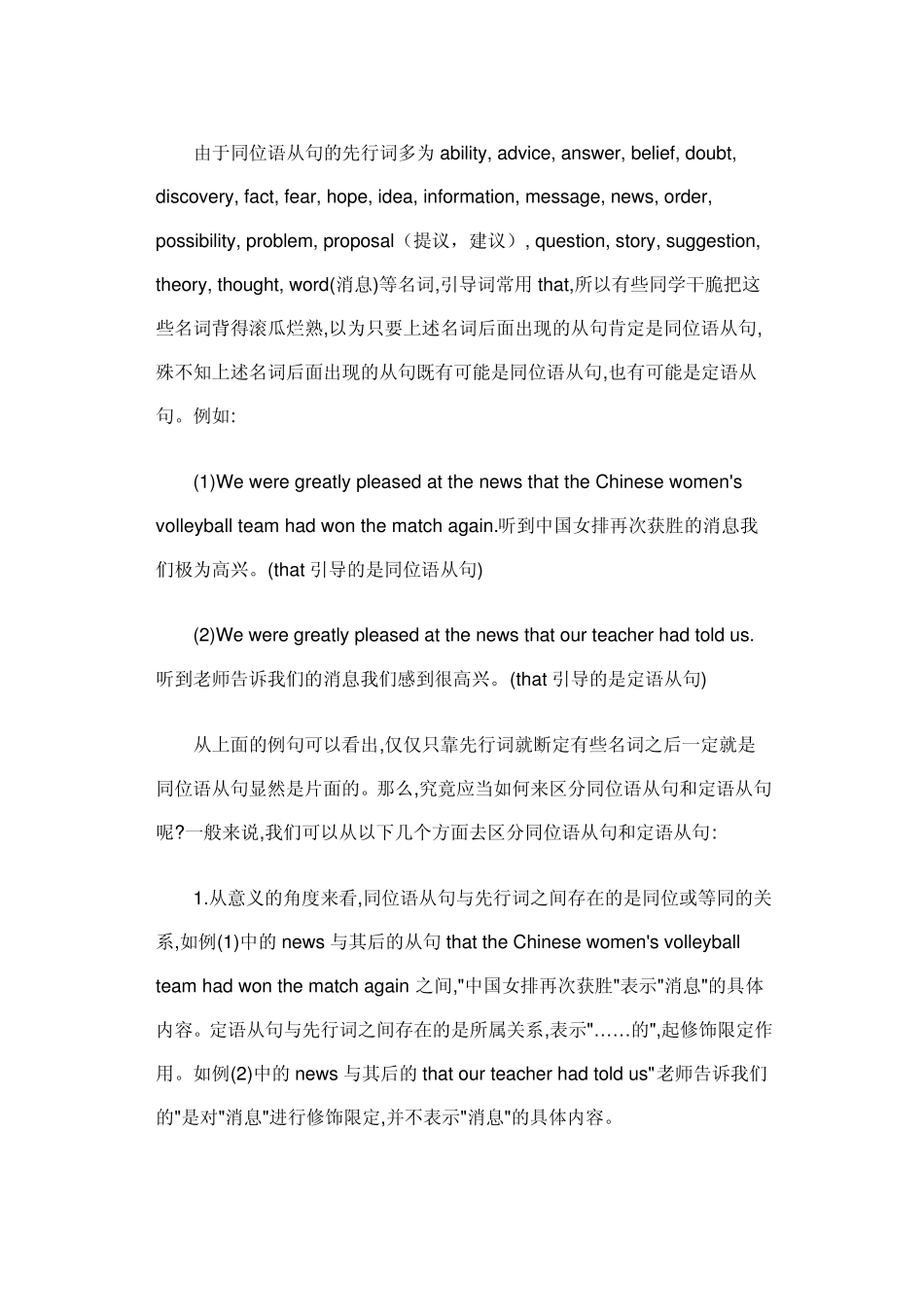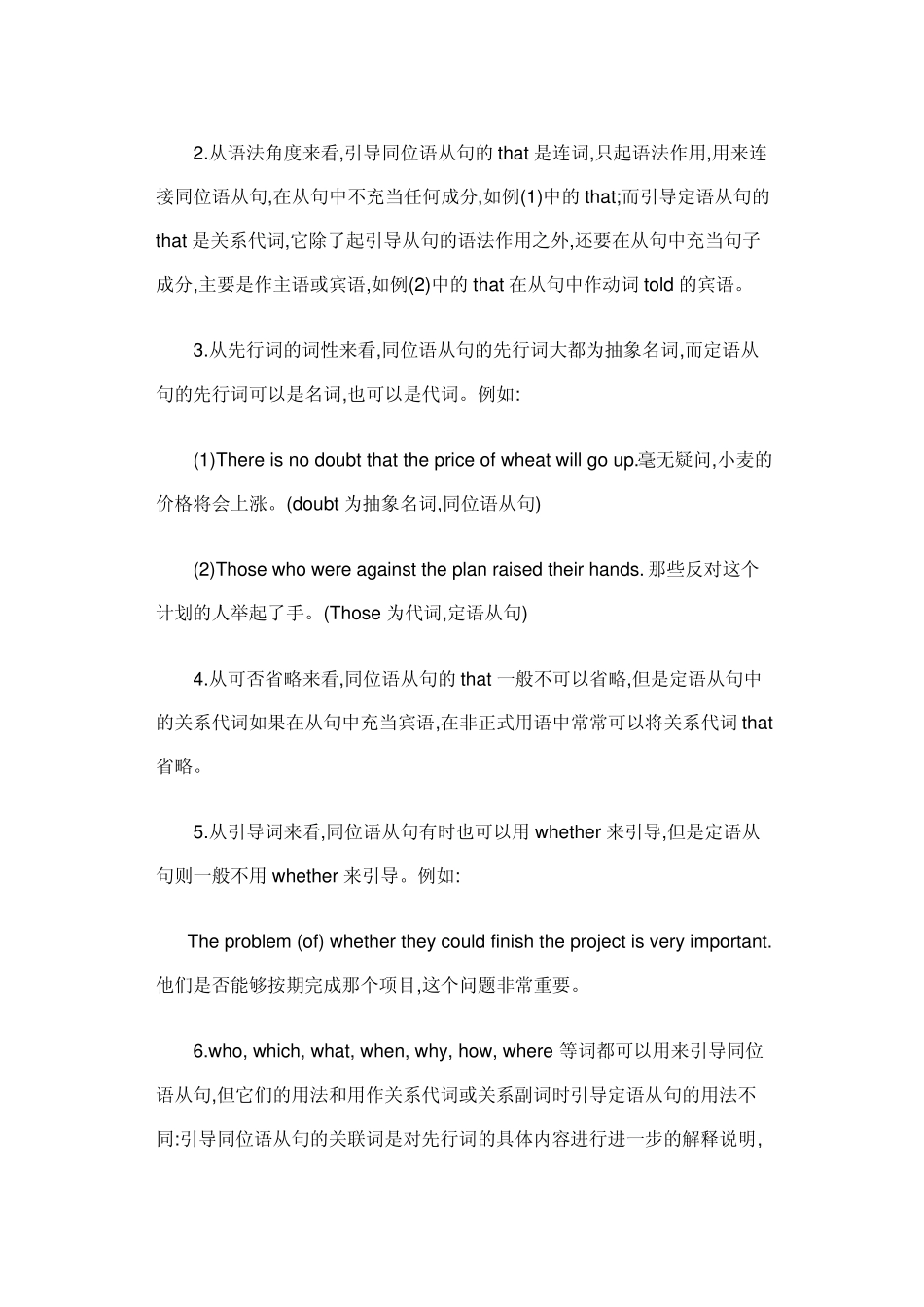同位语从句 同位语部分是个句子,就是同位语从句,这种用法比较"固定",把关键的几个词背下来. 一、在复合句中用作同位语的从句叫同位语从句。它一般跟在某些名词后面,用以说明该名词表示的具体内容。如: I heard the news that our team had won.我听到了我们队获胜的消息。 I had no idea that you were here.我不知道你在这里。 二、可以跟同位语从句的名词通常有new,idea,fact,promise,question,doubt,thought,hope,message,suggestion,word(消息),possibility等。如: I’ve come from Mr wang with a message that he won’t be able to see you this afternoon. 我从王先生那里来,他让我告诉你他今天下午不能来看你了。 三、英语中引导同位语从句的词通有连词 that,whether,连接副词 how,when,where 等。(注:if,which 不能引导同位语从句。)如: l have no idea When he will be back .我不知道他什么时候回来。 He must answer the question whether he agrees to if or not. 他必须回答他是否同意这样一个问题。 四、有时同位语从句可以不紧跟在说明的名词后面,而被别的词隔开。 如: Several years later,word came that Napoleon himself was coming to inspect them. 几年以后,有消息传来说拿破仑要亲自视 察他们。 The thought came to him that maybe the enemy had fled the city. 他突然想起可能敌人已经逃出城了。 英语通高二版:巧辨同位语从句与定语从句 同位语从句与定语从句在外形上非常相似,它们都有类似的引导词,因此很多同学对如何区分它们感到很困难,今天我们就这一语法现象进行讲解。 由于同位语从句的先行词多为ability, advice, answer, belief, doubt, discovery, fact, fear, hope, idea, information, message, news, order, possibility, problem, proposal(提议,建议), question, story, suggestion, theory, thought, word(消息)等名词,引导词常用that,所以有些同学干脆把这些名词背得滚瓜烂熟,以为只要上述名词后面出现的从句肯定是同位语从句,殊不知上述名词后面出现的从句既有可能是同位语从句,也有可能是定语从句。例如: (1)We were greatly pleased at the news that the Chinese women's volleyball team had won the match...


